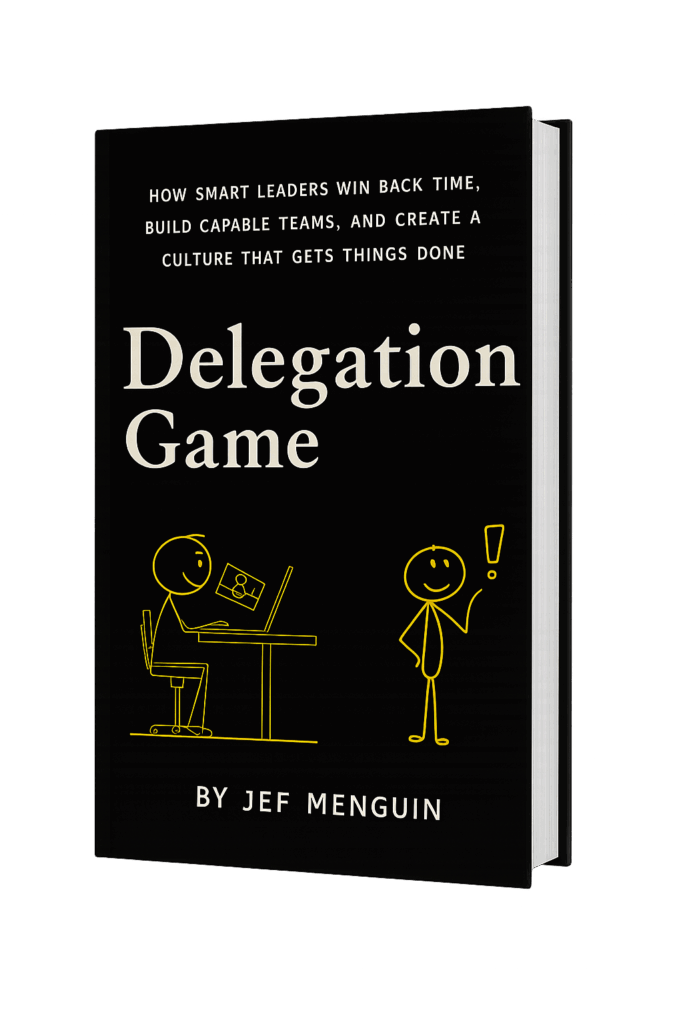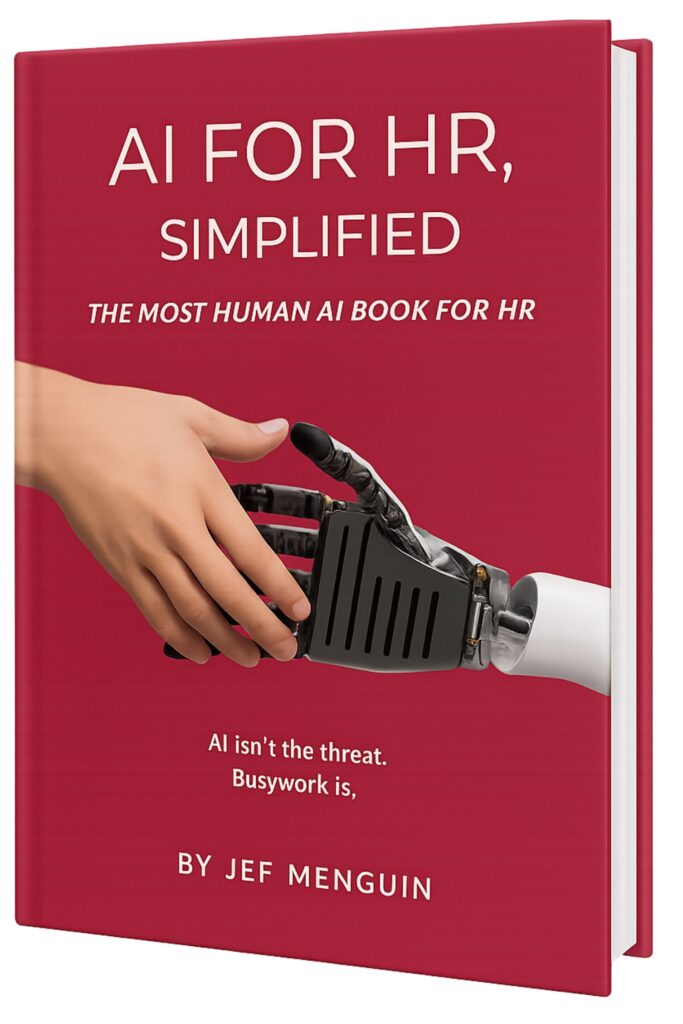The toughest HR problems don’t live in your company handbook. They live in the hallways. They show up in whispered conversations, in quiet nods during meetings, and in the habits nobody dares to question.
These are the unwritten rules. Nobody wrote them down. Yet everybody follows them.
I still remember sitting with an HR leader during a workshop. She lowered her voice and said, “In our company, feedback only happens during annual reviews. The rest of the year, silence.”
That one unwritten rule shaped the whole culture. People felt invisible. Managers avoided tough conversations. Talented employees left without warning. The handbook said all the right things about growth and feedback, but in reality, silence had become the norm.
That’s the danger of unwritten rules. They’re invisible, but they drive behavior. They can make or break your culture more than any polished policy ever could.
And here’s the good news: once you name them, you can flip them. Before I take you through the ten most damaging rules I’ve seen in organizations across the Philippines and Southeast Asia, let me share a simple way to do exactly that.
The Rule-Breaker Framework
It’s not enough to spot an unwritten rule. If all you do is point at it, people will just nod and say, “That’s true here.” You need to give them a way to flip it.
Here are a few rule-breaker moves that HR leaders and managers can use right away:
- Start with Yes. HR often gets tagged as the “No” department. Flip it by saying yes—with conditions. “Yes, we can explore that. Here’s what needs to happen to make it work.” Suddenly you’re a partner, not a blocker.
- Learn Out Loud. Mistakes are inevitable. Instead of hiding them, turn them into lessons. When leaders share what went wrong and what they learned, they break the culture of blame and invite innovation.
- Open the Floor. Hierarchy whispers, “The boss has all the answers.” Rule-breakers democratize ideas. Town halls, idea boards, and cross-functional teams give voice to people closest to the work—often the ones with the best solutions.
- Flip the Bargain. Traditional thinking says knowledge is power, so people hoard it. The flip? Make sharing the real power. Recognize and reward generosity, and watch collaboration grow.
Think of these as lenses. Once you see an unwritten rule, you hold it up to the light and ask: What’s the flip? What’s the shift? That’s how invisible rules lose their grip.
What Are Unwritten Rules in HR?
Unwritten rules are invisible norms, behaviors, and beliefs that employees follow without being formally documented. They shape workplace culture more than official policies, often reinforcing fear, favoritism, or inefficiency.
“Culture doesn’t live in the handbook. It lives in the unwritten rules.”
Now let’s surface the ten most common ones—and the flips that can set your culture free.
The 10 Unwritten HR Rules That Quietly Break Your Culture
Every workplace has its own secret playbook. These ten rules aren’t printed anywhere, but they guide decisions every single day. The problem is—they quietly hold companies back.
Here are the ones I see most often, along with the shifts that make all the difference.
1. The Annual Feedback Trap
Unwritten Rule: “Feedback only happens during annual reviews.”
Picture this: a manager calls in a team member for their yearly review. For the first time in twelve months, the employee hears about mistakes they made months ago. No coaching. No warning. Just judgment.
It’s no surprise employees feel blindsided. Small issues balloon into big frustrations. Good performers leave because they feel invisible.
The flip is simple: make feedback part of everyday work. A quick two-minute coaching moment after a meeting does more good than a stack of comments delivered at year’s end. Feedback should feel like encouragement during the game, not a post-mortem after the season ends.
2. The Department of No
Unwritten Rule: “HR is here to say no.”
A manager walks into HR with an idea. Before they can finish, HR shuts it down: “Sorry, policy won’t allow that.” Word spreads fast. If you want something done, don’t bother asking HR.
This is how HR loses its voice. Leaders bypass them. Employees avoid them. And HR becomes a caricature—more cop than coach.
The flip? Start with yes. Not reckless yes, but yes with conditions. “Yes, we can explore that. Here’s what you’ll need to prepare.” Suddenly HR isn’t a wall—it’s a door.
3. The Silent Boss Rule
Unwritten Rule: “If you disagree with your boss, keep it to yourself.”
A young employee spots a flaw in the project plan. They stay quiet. Everyone nods along with the boss. The project fails, just as they feared.
This rule kills innovation. It creates a culture of fear, not trust. Leaders end up surrounded by echoes of their own voice.
The flip starts with leaders themselves. One CEO I worked with began every meeting by asking, “What am I not seeing here?” That one question cracked open the silence. People spoke up. Assumptions were challenged. Better ideas emerged. Trust grew.
4. The Loyalty Ladder
Unwritten Rule: “Promotion is for loyalty, not performance.”
The one who stays the longest, keeps quiet, and plays politics gets promoted. The top performer—the one driving results—gets stuck. Eventually, they leave.
This rule doesn’t just cost talent. It signals to everyone else that effort doesn’t matter, only obedience does.
The flip is clear: reward outcomes, not tenure. Recognize the people who move the needle, not just the ones who stay in their chairs. When promotions reward merit, motivation spreads like wildfire.
5. The Busy Badge
Unwritten Rule: “Busyness beats results.”
You hear it in the office all the time: “I stayed until midnight last night.” “I’m swamped with meetings.” Busyness becomes a badge of honor.
But busyness doesn’t equal productivity. It often hides inefficiency. People burn out, proud of exhaustion but empty of results.
Flip it by celebrating impact, not activity. Applaud the employee who solved the problem in two hours, not the one who stayed twelve. Results, not hours, should win the applause.
6. The Fragile Peace Pact
Unwritten Rule: “Conflict is dangerous.”
Many teams treat conflict like fire—avoid it at all costs. Meetings stay polite. Issues stay hidden. Decisions stay shallow.
But avoiding conflict doesn’t create peace. It creates resentment. It lets problems fester.
The shift is to embrace conflict as a path to clarity. Healthy debate sharpens ideas and builds trust. Some of the best teams I’ve worked with didn’t avoid conflict—they learned how to fight fair.
7. The Untouchable Leader Myth
Unwritten Rule: “Leaders don’t need feedback.”
Feedback flows down, never up. The boss gives it, the team receives it. The boss? Off-limits.
This creates blind spots at the top. Leaders stop hearing the truth. Teams lose respect.
The flip? Leaders ask for feedback themselves. Even a simple, “What’s one thing I could do better?” changes the dynamic. When leaders model openness, trust grows in both directions.
8. The Approval Bottleneck
Unwritten Rule: “New ideas must wait for approval.”
An employee has a fresh idea. It gets stuck in endless sign-offs. By the time it reaches the top, the spark is gone—or the opportunity has passed.
This rule suffocates innovation. The people closest to problems are often the ones with the best solutions. But when every idea has to crawl through bureaucracy, nothing moves.
The flip is permission to experiment. Create safe-to-try zones where employees can pilot ideas quickly. Not every idea needs a signature. Speed beats perfection.
9. The Disposable Mindset
Unwritten Rule: “People are replaceable.”
No one says it outright, but the message is clear: “If you leave, we’ll just hire another.”
This makes employees feel like cogs in a machine. Engagement plummets. Loyalty fades.
But the truth is, no one is truly replaceable. Each person brings a unique mix of relationships, skills, and perspectives.
Flip it by recognizing individual value. A simple practice like ending meetings with “wins and thanks” reminds everyone that people matter more than positions.
10. The Waiting Game
Unwritten Rule: “Change only starts from the top.”
This one keeps organizations stuck. Employees wait for executives to launch the next big program. Executives wait for managers to cascade it down. Everyone waits. Nothing shifts.
But culture doesn’t move only from the corner office. It shifts when individuals act differently, consistently. I’ve seen frontline employees start small rituals—like a Friday reflection circle—that spread across entire departments.
The flip is showing that everyone has agency. Change doesn’t need permission. It needs practice.
Quick Summary: Rules & Flips at a Glance
| Unwritten Rule | The Flip |
|---|---|
| Feedback only happens annually | Feedback at the moments that matter most |
| HR is here to say no | HR as growth partner |
| If you disagree with your boss, keep it to yourself | Safe spaces for honest dialogue |
| Promotion is for loyalty | Promotion for performance |
| Busyness beats results | Measure impact, not activity |
| Conflict is dangerous | Conflict as clarity |
| Leaders don’t need feedback | Feedback fuels credibility |
| New ideas must wait for approval | Permission to experiment |
| People are replaceable | Every person adds unique value |
| Change only starts from the top | Everyone has agency to shift |
FAQs About Unwritten Rules in HR
Aren’t unwritten rules just another word for culture?
Not exactly. Culture is the big picture—values, behaviors, shared identity. Unwritten rules are the invisible shortcuts or defaults that shape culture day-to-day.
How do I change them if my leaders reinforce them?
Start small. You don’t need permission to model a flip. When results show, even resistant leaders notice.
Can frontline employees really break these rules?
Yes. Culture shifts often begin at the edges. Small rituals—like daily check-ins or celebrating wins—spread faster than top-down memos.
How long does it take to flip an unwritten rule?
It depends on consistency. Some shifts take weeks to spread; others take months. But once people see a better way, momentum builds.
Breaking the Rules, Building the Shift
These ten rules are invisible, but their impact is real. They shape how people behave, decide, and belong at work. The moment you name them, you weaken their grip. The moment you flip them, you start to shift culture.
So here’s my challenge: Which of these rules is alive in your workplace today? And what’s one flip you can try this week?
Because culture doesn’t change with posters or slogans. It changes when unwritten rules are broken—and replaced with better ones.
For the past twenty years, I’ve worked with HR leaders, managers, and teams across the Philippines and Southeast Asia. The most powerful shifts I’ve witnessed didn’t come from new systems or fancy strategies. They came from surfacing the invisible rules—and breaking them together.
👉 Want help spotting and flipping the unwritten rules in your workplace? Download the Rule-Breakers Kit here.
👉 Explore our Team Building Workshops and learn how to design culture shifts that stick.
👉 Read more about culture design in my book Culture That Sticks.
Because once you break the rules that hold you back, you free your people to build the culture you’ve always wanted.


